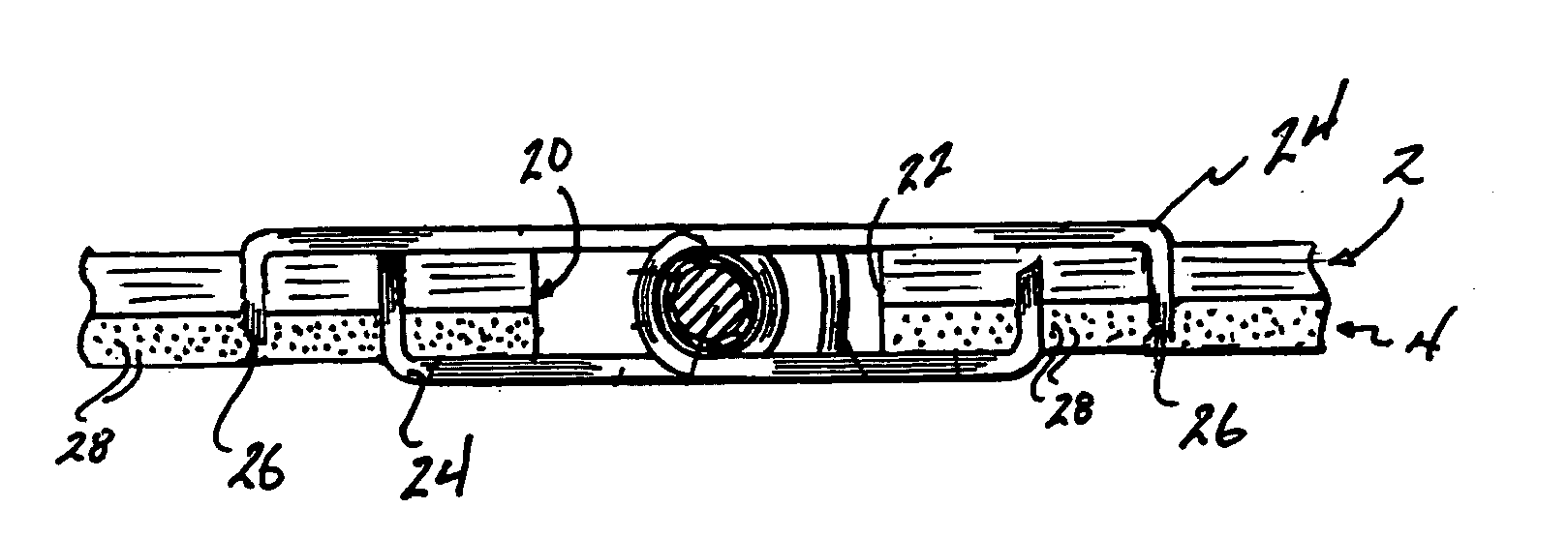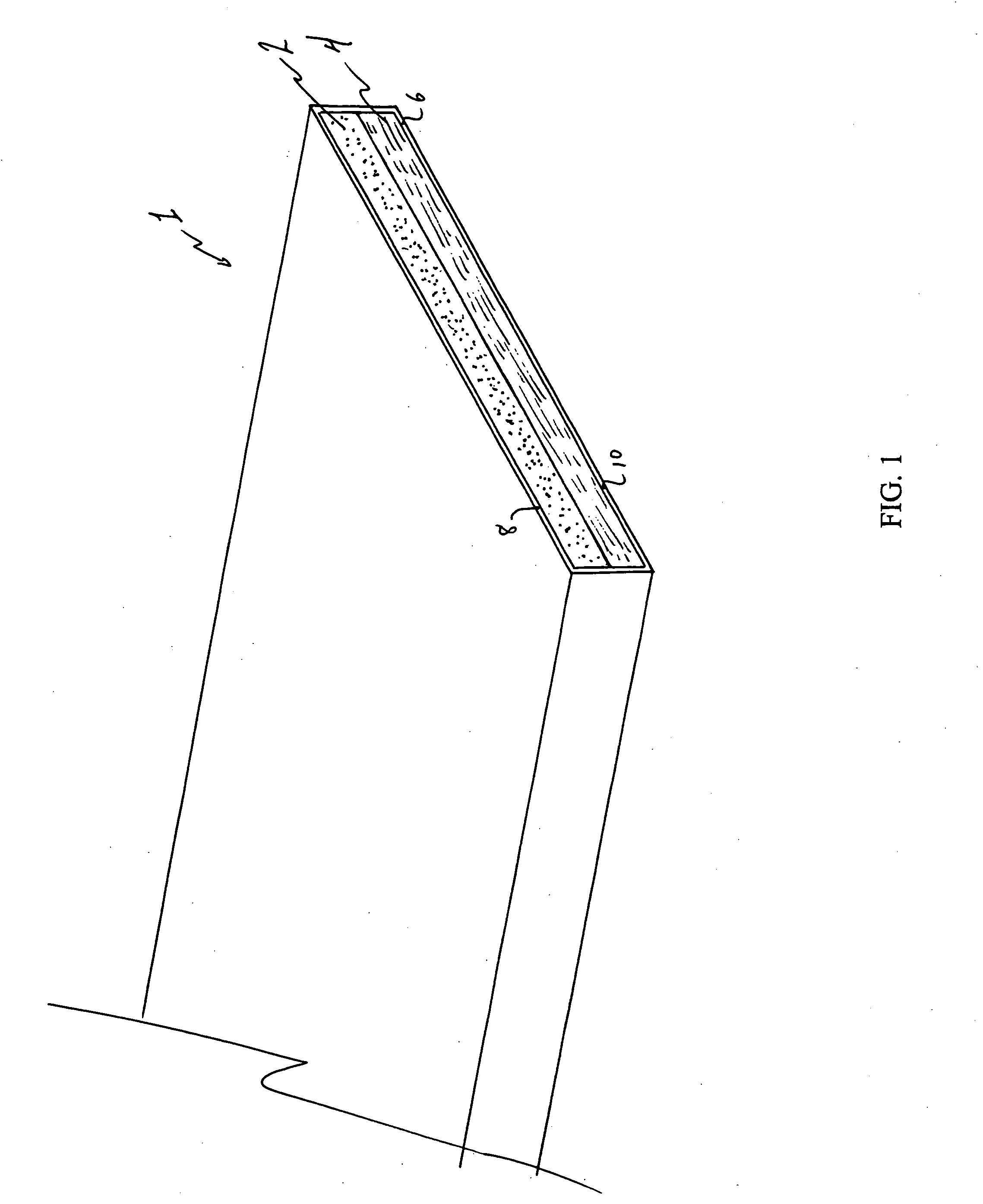Oriented needled felt conveyor belt
a needled felt and conveyor belt technology, applied in the direction of belts, belt/chains/gearings, belt fastenings, etc., can solve the problems of nonwoven belts that may not have the strength to perform in a wide variety of applications, noise, and noise of conventional lightweight belts, etc., to achieve the desired strength, the effect of cost-effectiveness and efficiency
- Summary
- Abstract
- Description
- Claims
- Application Information
AI Technical Summary
Benefits of technology
Problems solved by technology
Method used
Image
Examples
example
[0063]A conveyor belt was constructed from two layers of 30 ounce per square yard (opsy) 100% nonwoven material. The first layer was staple carded length wise, and the second layer was staple carded widthwise. The first layer comprised 65% of the total weight of the two layers, while the second layer comprised the remainder. The first and second layers were needled together and the top and bottom surfaces of the resulting carcass were singed. The singed carcass was then dipped into a bath of PVC and directed through squeegee rolls to remove excess PVC material from the carcass surfaces. The impregnated carcass was then passed to a curing oven to cure the PVC. Upon exiting the curing oven, the product was sent through a series of finishing rolls to provide a smooth final surface to the finished belt. The final construction comprised a 1 mil thickness of PVC as the top cover, a carcass play of 133 mils, a 1 mil thickness of PVC as the bottom cover. Total belt thickness was 135 mils.
Te...
PUM
 Login to View More
Login to View More Abstract
Description
Claims
Application Information
 Login to View More
Login to View More - R&D
- Intellectual Property
- Life Sciences
- Materials
- Tech Scout
- Unparalleled Data Quality
- Higher Quality Content
- 60% Fewer Hallucinations
Browse by: Latest US Patents, China's latest patents, Technical Efficacy Thesaurus, Application Domain, Technology Topic, Popular Technical Reports.
© 2025 PatSnap. All rights reserved.Legal|Privacy policy|Modern Slavery Act Transparency Statement|Sitemap|About US| Contact US: help@patsnap.com



